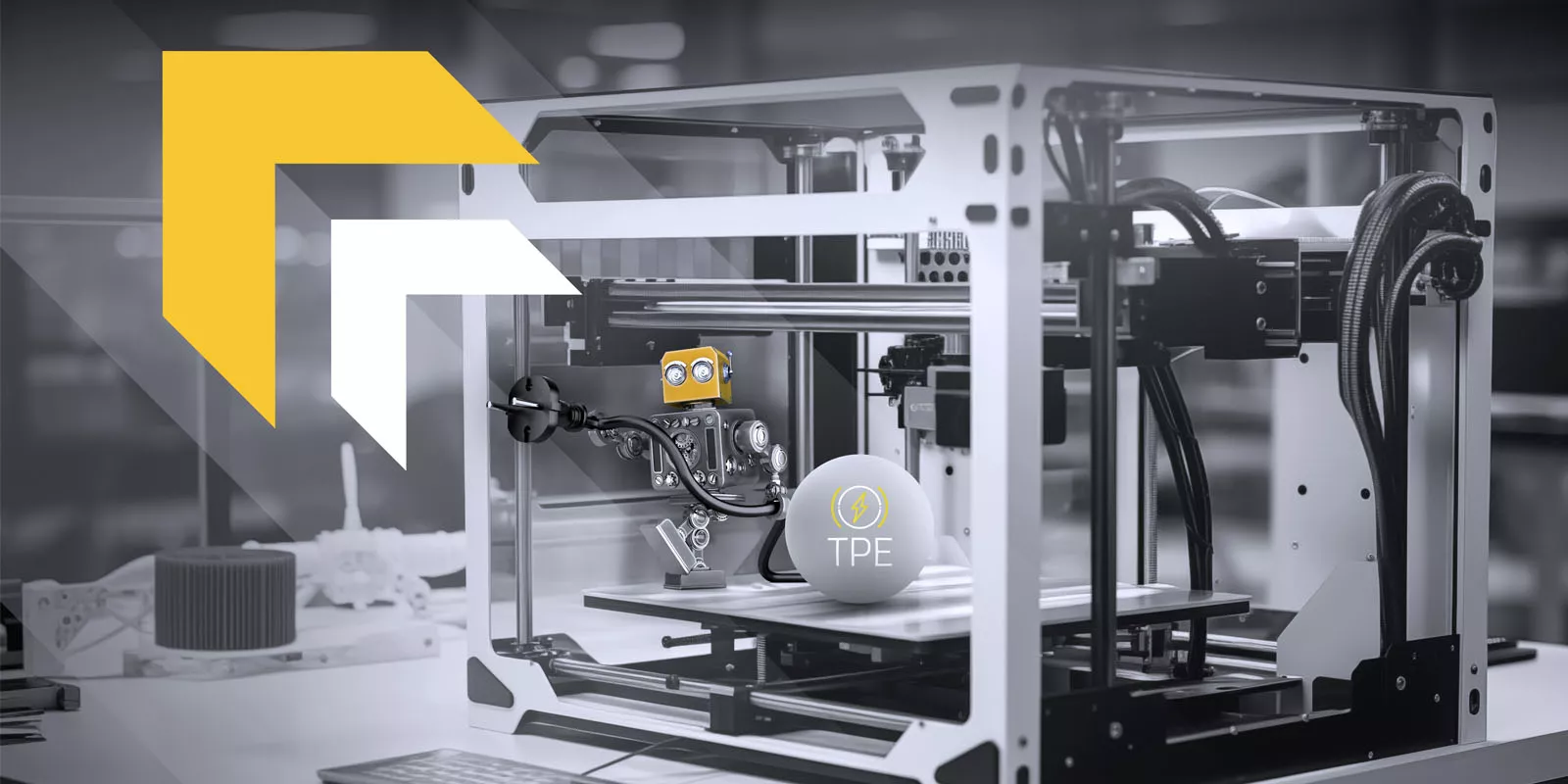3D Printing of Thermoplastic Elastomers with Electrical Conductivity
Johanna Schmid, Market Manager Industry at KRAIBURG TPE, discusses the challenges and advancements in using thermoplastic elastomers (TPE) in 3D printing with electrically conductive materials.
Johanna Schmid, Market Manager Industry at KRAIBURG TPE, discusses the challenges and advancements in using thermoplastic elastomers (TPE) in 3D printing with electrically conductive materials. In her blogpost, she also highlights the limitations of traditional 3D printing processes with TPE materials due to issues like conversion difficulties and uniform extrusion. She outlines the solution of using pellet extrusion technology for TPE, emphasizing its versatility, cost-effectiveness, and suitability for functional prototyping and serial production. Additionally, she underscores the growing demand for electrically conductive materials in various applications.
TPE materials in 3D printing
By now, the advantages as well as disadvantages of 3D printing have long been established, including flexible design, rapid prototyping, cost effectiveness but also a limitation of materials. Classic 3D printing processes quickly reach their limitations in the processing of TPE materials below a hardness value of 70 Shore A. There are many reasons for this: it may not be possible to convert the desired material into the powder form required for sintering processes without excess effort, the material may not melt homogeneously or quickly enough in the laser beam, or it may not be possible for filaments to be extruded uniformly enough. Regardless of the technology used in the printers, this is a common obstacle: Soft TPE materials can’t be processed directly using classic systems.
To overcome this, the challenge for suppliers of 3D printing solutions was to find ways of processing TPS compounds reliably. The processing problem, however, has been tackled successfully with different approaches. As increasingly more TPE compounds can be used for 3D printing, I want to briefly outline one of the major technologies which we recently used to print prototypes with electrically conductive thermoplastic elastomers to tackle the increasing need for applications such as sensors, flexible conductors or cable management systems.
Pellet extrusion technology for TPE
Driven by the need to make 3D printing more versatile or move it into serial production, the concept of direct pellet extrusion was brought to live. This method combines the advantages of 3D printing – such as the ability to create structures that are not possible with injection molding or metal milling – with the benefits of abundantly available polymer granulates including a wide range of the KRAIBURG TPE portfolio compounds. The versatility of the material properties, hardnesses and finishings of commercially available plastics is unrivalled.
The costs are also lower in comparison with classic 3D printing filaments. Due to the virtually infinite selection of materials, pellet extrusion technology is an enabler of functional prototyping. And due to material costs and high throughput, it opens doors to small and mid-sized series production as well.
Why Electrical Conductivity in TPE matters
The bottom line is: the functional requirements for any kind of plastics are increasing. Take a car as an example: a car can have over 70 sensors that monitor various aspects of the vehicle. So whether we are talking about sensors, operating aids for touchscreens or the dissipation of residual currents – each of these applications is made possible by electrically conductive materials. Thus, manufacturers of plastics need to deliver materials with low resistivity. Hence: Using material that can be processed in 3D printing can benefit the first project phases immensely.
Therefore we have successfully tested our electrically conductive EC-series in regards to feasibility of 3D printing. And with the market looking bright for all kind of applications based on sensor information, having material available that is ready for rapid prototyping will benefit customers and manufacturers alike.
Author | Johanna Schmid
Market Manager Industry

Phone: +49 8638 9810-436
E-Mail: johanna.schmid@kraiburg-tpe.com
Press | Juliane Schmidhuber
PR & Communications Manager

Phone: +49 8638 9810-568

